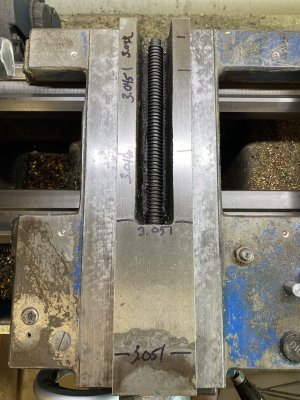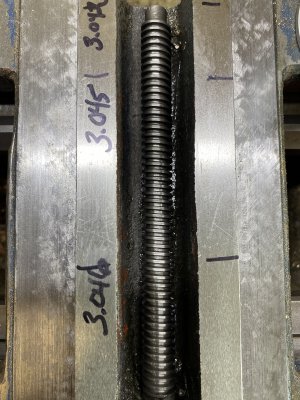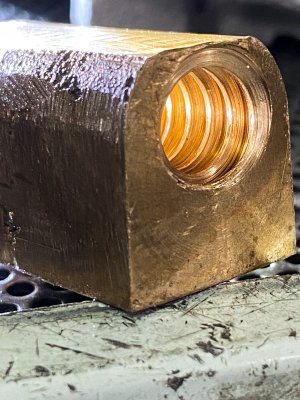- Joined
- Jul 11, 2020
- Messages
- 24
The “crack” is some kind of casting flashing it looks like. There are oiling holes all over these slides. They’re all patent and i’ve kept it all oiled since I acquired it a year ago. Who knows how it was treated in the past. It’s not a fancy lathe. In my first post I included a link with some info about it. It’a a 1980 year model lathe made in Taiwan. I don’t see any visible cracks in the saddle or cross slide or gib. I don’t know how to remove the top of the carriage or I’d take it to the shop with me today and magnaflux all the parts. I can do the cross slide and gib today though. The brass nut is messy enough I can’t appreciate its condition. I’ll wash that in the parts washer at the shop today. Not sure how that set screw is useful for any kind of adjustment.... it’s tightened in the back of the nut already. The screw looks good. It’s clean and straight. No crazy wear noted at all, but the brass nut might be well worn inside.
I posted images with measurements. Sorry they’re not a good resolution, but I have no way of reducing it without getting on the computer and figuring out a way to do that. I’ll kwep practicing.
Also, I’m not sure how valid my measurements are under the cross slide. It’s tapered so that seems useless. The larger numbers on the left of that image are without the gib in place. With the gib it place it’s certainly not straight either.
Mr. King, I’ll do some additional measurements with the dial indicator that you mentioned either this evening or tomorrow. It’s about time I got to the shop and got busy for the day.
I posted images with measurements. Sorry they’re not a good resolution, but I have no way of reducing it without getting on the computer and figuring out a way to do that. I’ll kwep practicing.
Also, I’m not sure how valid my measurements are under the cross slide. It’s tapered so that seems useless. The larger numbers on the left of that image are without the gib in place. With the gib it place it’s certainly not straight either.
Mr. King, I’ll do some additional measurements with the dial indicator that you mentioned either this evening or tomorrow. It’s about time I got to the shop and got busy for the day.






